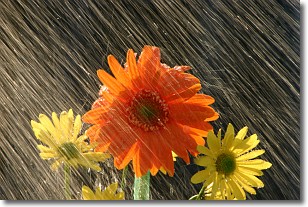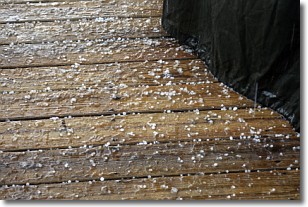Weather Alert in Arkansas
Flood Warning issued April 23 at 8:19PM CDT by NWS Little Rock AR
AREAS AFFECTED: White, AR; Woodruff, AR
DESCRIPTION: ...The Flood Warning continues for the following rivers in Arkansas... White River At Des Arc affecting Prairie County. White River At Georgetown affecting Prairie, White and Woodruff Counties. White River At Clarendon affecting Monroe and Arkansas Counties. White River At Augusta affecting White and Woodruff Counties. For the Lower White River...including Newport, Augusta, Georgetown, Des Arc, Clarendon...Moderate flooding is forecast. * WHAT...Minor flooding is occurring and minor flooding is forecast. * WHERE...White River at Augusta. * WHEN...Until further notice. * IMPACTS...At 26.0 feet, Farm ground along the river in White and Woodruff counties begin to flood. Seasonal agricultural impacts. At 28.0 feet, Roads in Henry Gray Hurricane Lake Wildlife Management area flooded. Thousands of acres of cultivated land flooded in White and Woodruff counties. At 30.0 feet, Thousands of acres of farm ground flooded. County roads on both sides of the river are flooded, including County Road 871 and 899. At 32.0 feet, Thousands of acres of cropland and farm roads are flooded in White and Woodruff counties. Water is isolating homes and camps along the river in White and Woodruff counties. * ADDITIONAL DETAILS... - At 7:00 PM CDT Wednesday the stage was 32.3 feet. - Forecast...The river is expected to fall to 32.0 feet by Monday morning, April 28. - Flood stage is 26.0 feet. - http://www.weather.gov/safety/flood
INSTRUCTION: Turn around, don't drown when encountering flooded roads. Most flood deaths occur in vehicles. River forecasts are based on current conditions and rainfall forecasted to occur over the next 24 hours. During periods of flooding...Evening forecasts are reissued with updated rainfall forecasts. Observed and forecasted stage data plots are available on our Advanced Hydrologic Prediction Service web page at... www.weather.gov/lzk Under the Current Conditions section...Select River and Lakes AHPS. The next statement will be issued Thursday evening at 830 PM CDT.
Want more detail? Get the Complete 7 Day and Night Detailed Forecast!
Current U.S. National Radar--Current
The Current National Weather Radar is shown below with a UTC Time (subtract 5 hours from UTC to get Eastern Time).

National Weather Forecast--Current
The Current National Weather Forecast and National Weather Map are shown below.

National Weather Forecast for Tomorrow
Tomorrow National Weather Forecast and Tomorrow National Weather Map are show below.

North America Water Vapor (Moisture)
This map shows recent moisture content over North America. Bright and colored areas show high moisture (ie, clouds); brown indicates very little moisture present; black indicates no moisture.

Weather Topic: What is Rain?
Home - Education - Precipitation - Rain
 Next Topic: Shelf Clouds
Next Topic: Shelf Clouds
Precipitation in the form of water droplets is called rain.
Rain generally has a tendency to fall with less intensity over a greater period
of time, and when rainfall is more severe it is usually less sustained.
Rain is the most common form of precipitation and happens with greater frequency
depending on the season and regional influences. Cities have been shown to have
an observable effect on rainfall, due to an effect called the urban heat island.
Compared to upwind, monthly rainfall between twenty and forty miles downwind of
cities is 30% greater.
Next Topic: Shelf Clouds
Weather Topic: What is Sleet?
Home - Education - Precipitation - Sleet
 Next Topic: Snow
Next Topic: Snow
Sleet is a form of precipitation in which small ice pellets are the primary
components. These ice pellets are smaller and more translucent than hailstones,
and harder than graupel. Sleet is caused by specific atmospheric conditions and
therefore typically doesn't last for extended periods of time.
The condition which leads to sleet formation requires a warmer body of air to be
wedged in between two sub-freezing bodies of air. When snow falls through a warmer
layer of air it melts, and as it falls through the next sub-freezing body of air
it freezes again, forming ice pellets known as sleet. In some cases, water
droplets don't have time to freeze before reaching the surface and the result is
freezing rain.
Next Topic: Snow
Current conditions powered by WeatherAPI.com




